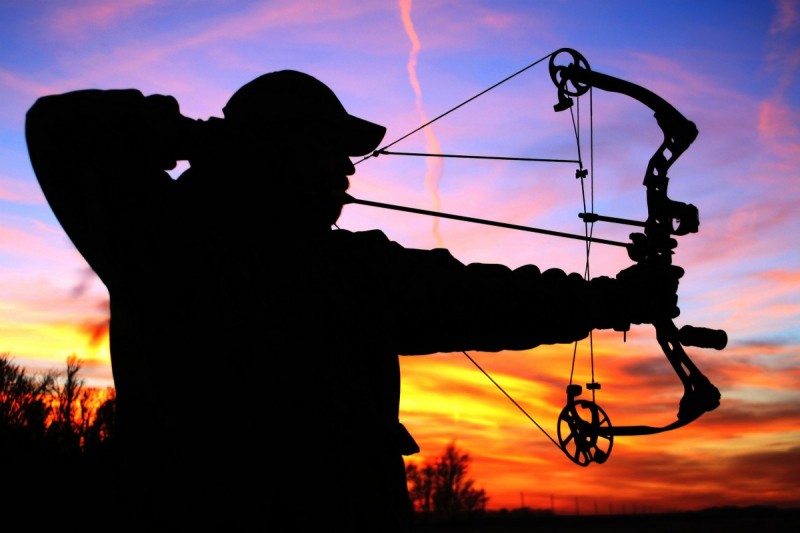Bow hunting in a suburban neighborhood: Is it wise? Safe?

Image by Kansas Tourism licensed under Creative Commons.
When my family moved from Alexandria to West Springfield, we figured our home’s walk score would fall. What I didn’t expect was to stumble upon an official sign with a warning about county-sanctioned bow hunting in the middle of my neighborhood.
“Urban archery” is a term that may leave you scratching your head and wondering. But it’s definitely real. Called “the most practical and cost-effective means” to control the deer population in a 2014 letter from Virginia’s Secretary of Natural Resources, it essentially means that bow hunting is allowed in many parts of Fairfax that are very close to where people live.
More specifically, if park land is on an annually-published list of places, (about 19,125 of Fairfax County’s roughly 250,000 acres), bow hunting is allowed there between September and February, Monday through Saturday, from 30 minutes prior to sunrise to 30 minutes after sunset.
A Fairfax County sign warning of hunting dangers to people and pets. Image by the author.
The Middleford community, the neighborhood where my family and I live, is five miles west of the Franconia-Springfield Metro, adjacent to Fairfax County Parkway and several other larger neighborhoods in West Springfield; there are 49 single-family detached homes and 99 townhomes.
There’s a large patch of undevelopable land in the middle with a creek that has a paved trail that runs along it, which is popular for dog walkers or families wanting to go on a short hike. When the neighborhood was being developed, this was turned over to the county as park land. Turns out that today, bow hunting is now allowed there. In fact, its narrowest portion, where homes are closest to one another, is where I found this Deer Management Notice warning of bow hunting on the premises.
Base map from Fairfax County GIS. Image by the author.
Managing the county’s deer population is important, but doing it so close homes in the middle of a community of families with many small children is a bit troubling. The county’s website offers conflicting information when it comes to bow hunting safety. It says that since Virginia started tracking hunting injuries in 1959, no bystanders have been injured by an archer in the state… but in the very next paragraph it says since 1960 there have been five bystanders injured, the last one being in 1996.
A hunting notice posted just off of Middleford homes' property. 
The website goes on to say that hunters use tree stands to engage targets from above, which cuts down on the risk of an errant arrow threatening a bystander. But there are no tree stands visible in the designated Middleford hunting area.
There’s also a similar problem not far from Middleford: the Middleford paved path stops short of connecting with the paths around nearby Huntsman Lake, and over the years residents, have worn paths through the woods to complete the trail. Now, though, that land is a hunting area, meaning you either can't travel between Middle Run Creek and the lake or you have to put yourself in danger to do so.
Urban archery may have it’s merits in controlling the deer population—last year the program was credited for removing 848 deer without the need to close the park land in Fairfax County. But for small parks surrounded by housing, I would rather take my chances battling Bambi than taking on an errant arrow.
Update: This post has a new map in it that's more precise than the first version. There are actually two different, specific hunting zones that fall in the larger area discussed here.
